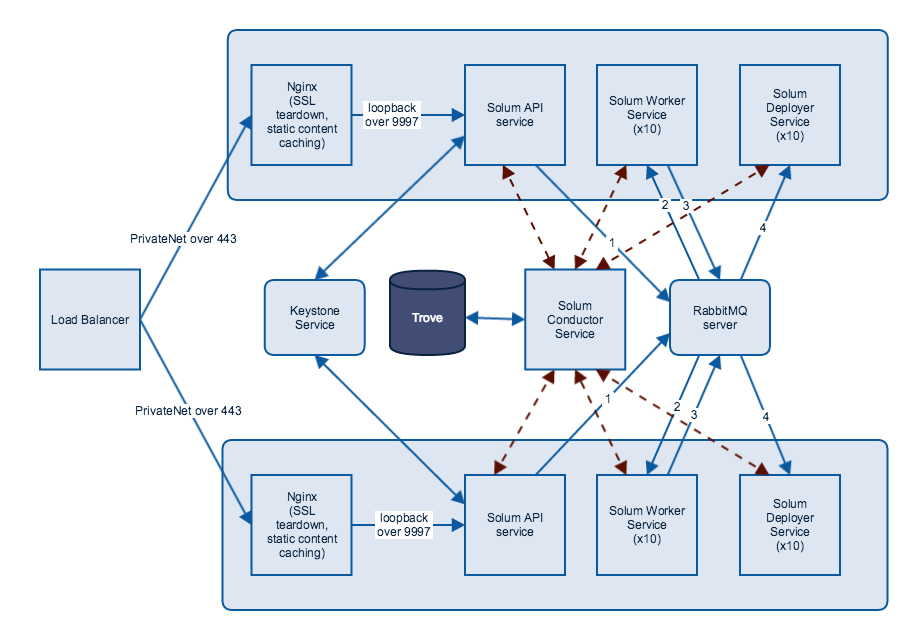This patch set makes the following changes: * using the new standards * Update doc/source/index.rst with new links Change-Id: If350cc2a7c5b8a6b8ae01d74ef3f992dc2c5c361
2.7 KiB
2.7 KiB
Configure and run Solum
Configuration Reference
To alter the default compute flavor edit /etc/solum/templates/*.yaml :
flavor:
type: string
description: Flavor to use for servers
default: m1.tinyEdit the default section to the desired value.
Administrator Guide
../man/index
High Availability Guide
Operations Guide
Solum has been successfully running in production environments with the following example architecture:
Solum application deployment follows this flow:
- Load Balancer listening on HTTPS port
- Traffic travels across private net to 2+ nodes to Nginx listening on port 443
- Nginx tears down SSL and redirects traffic over loopback to port 9777 to Solum API service
- Solum API Service authenticates with Keystone service (open up outbound traffic to only keystone service from Solum API)
- To retrieve Solum applications, API service would send messages to Conductor service, which communicates over service net to Trove to retrieve data
- During app deployment, Solum API service sends a queue message to Rabbit MQ service [1] (should be multi-node over private net)
- Solum Worker service picks up a queue message from Rabbit MQ [2] and
pulls down a git repository, builds it, runs unit tests (if specified),
builds a docker container, and uploads it to Swift
- This is a fairly lengthy process and completely blocks this service. You should scale out your infrastructure to easily accommodate your traffic. A performance test based on your expected load can give you a good idea of how many nodes and how many worker services per node you need.
- Solum Worker persists application state to Trove via Conductor service
- Upon completion, worker service sends a message to Rabbit MQ [3]
- Solum Deployer service picks up the message from Rabbit MQ [4] and
calls Heat to deploy a heat stack with user's information and newly
created docker container
- Deployer service also blocks on this call so your infrastructure should scale out to support your user load
- Deployer service persists application state to Trove via Conductor service
Solum deployment infrastructure is dependent on existence of the following OpenStack services:
- Nova
- Keystone
- Trove
- Swift
- Glance
- Heat
To assist with deploying a new Solum architecture, please refer to the following cookbooks to get started:
- https://github.com/rackerlabs/cookbook-openstack-paas
- https://github.com/openstack/cookbook-openstack-identity.git
- https://github.com/openstack/cookbook-openstack-common.git
